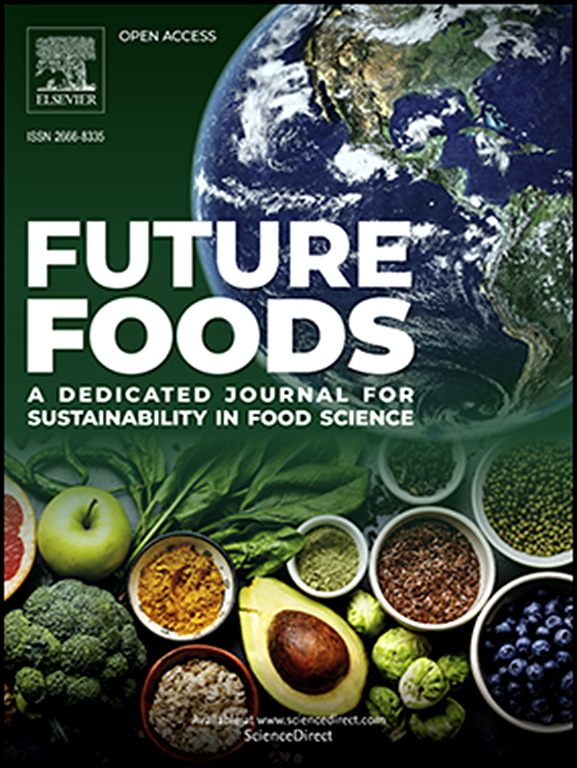Improving the extraction of tomato seed oil and the retention of bioactive substances using pulsed electric field technology
IF 8.2
Q1 FOOD SCIENCE & TECHNOLOGY
引用次数: 0
Abstract
Tomato seeds are by-products of tomato processing and are rich in important bioactive compounds like carotenoids, polyphenols, phytosterols and fatty acids. The aim of this work was to provide insight into bioactive profile and key physicochemical properties of tomato seed oil (TSO) by using a pulsed electric field (PEF) as a pre-extraction process. Influence of PEF treatment parameters on quality of TSO is reflected in concentration of extracted bioactive compounds, antioxidant activity and oxidative stability of TSO. HPLC and GC analysis revealed that lycopene is the major carotenoid with an average concentration of 565.54 mg/mL and linoleic fatty acid is predominant unsaturated fatty acid in TSO. Results obtained in this work indicate that the PEF treatment parameters of 9 min and 0.5 μs provide the best result in extraction and isolation of bioactive components. Due to the high concentration of bioactive compounds, TSO has strong antioxidant activity, which also plays important role in oxidative stability of the oil. The resistance to free radical formation at high temperatures describes the oxidative stability of TSO, which was investigated by EPR spectroscopy and DSC. This study provides important information about the composition and properties of tomato seed oil, which is crucial for future industrial production and consumption.

利用脉冲电场技术改进番茄籽油的提取和生物活性物质的保留
番茄种子是番茄加工的副产品,富含重要的生物活性化合物,如类胡萝卜素、多酚、植物甾醇和脂肪酸。本研究的目的是利用脉冲电场(PEF)作为预提取工艺,深入了解番茄籽油(TSO)的生物活性特征和关键理化性质。PEF处理参数对TSO质量的影响主要体现在提取的生物活性物质浓度、TSO的抗氧化活性和氧化稳定性等方面。HPLC和GC分析表明,番茄红素为主要的类胡萝卜素,平均浓度为565.54 mg/mL,亚油酸脂肪酸为主要的不饱和脂肪酸。实验结果表明,PEF处理参数为9 min和0.5 μs时,提取分离活性成分的效果最佳。由于TSO中含有高浓度的生物活性化合物,因此具有较强的抗氧化活性,对油的氧化稳定性也起着重要的作用。通过EPR光谱和DSC研究了TSO在高温下对自由基形成的抵抗能力。该研究为进一步了解番茄籽油的成分和性质提供了重要信息,对今后的工业生产和消费具有重要意义。
本文章由计算机程序翻译,如有差异,请以英文原文为准。
求助全文
约1分钟内获得全文
求助全文
来源期刊

Future Foods
Agricultural and Biological Sciences-Food Science
CiteScore
8.60
自引率
0.00%
发文量
97
审稿时长
15 weeks
期刊介绍:
Future Foods is a specialized journal that is dedicated to tackling the challenges posed by climate change and the need for sustainability in the realm of food production. The journal recognizes the imperative to transform current food manufacturing and consumption practices to meet the dietary needs of a burgeoning global population while simultaneously curbing environmental degradation.
The mission of Future Foods is to disseminate research that aligns with the goal of fostering the development of innovative technologies and alternative food sources to establish more sustainable food systems. The journal is committed to publishing high-quality, peer-reviewed articles that contribute to the advancement of sustainable food practices.
Abstracting and indexing:
Scopus
Directory of Open Access Journals (DOAJ)
Emerging Sources Citation Index (ESCI)
SCImago Journal Rank (SJR)
SNIP
 求助内容:
求助内容: 应助结果提醒方式:
应助结果提醒方式:


